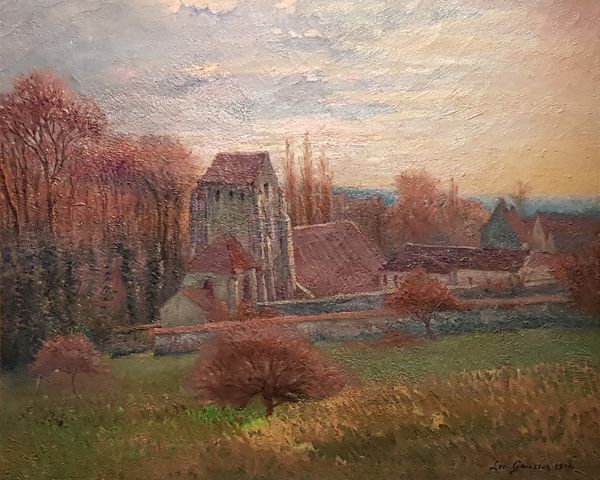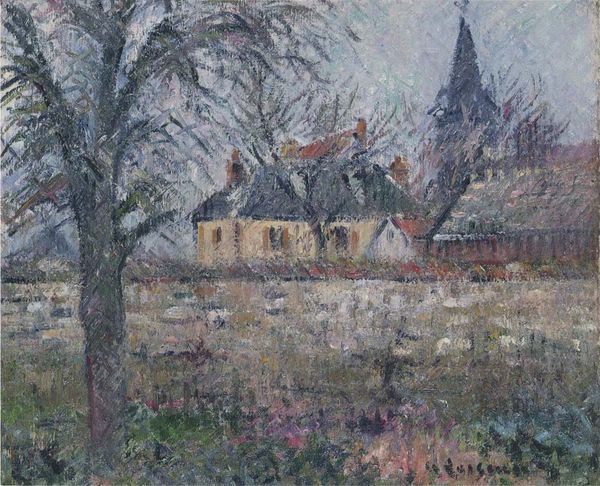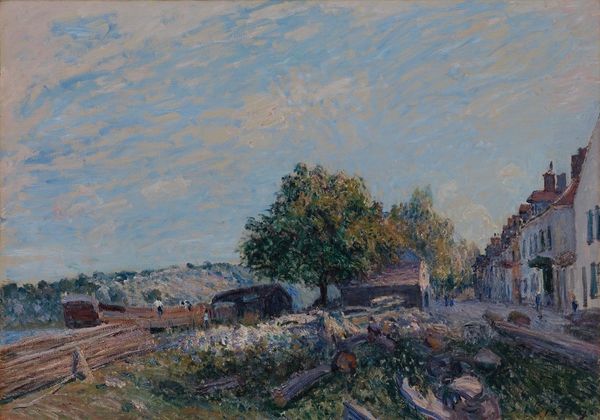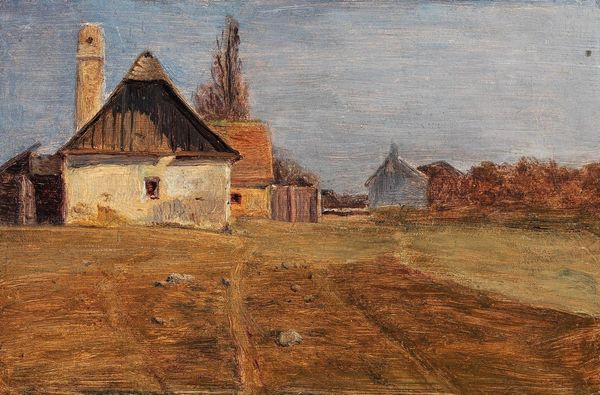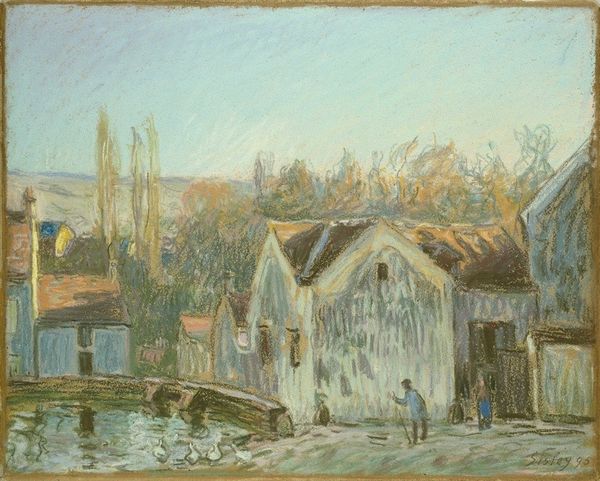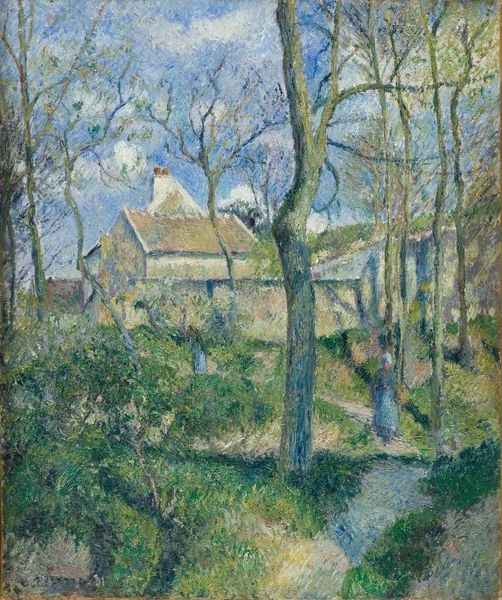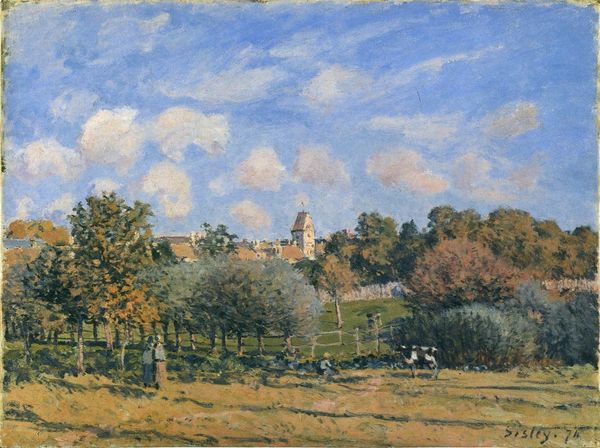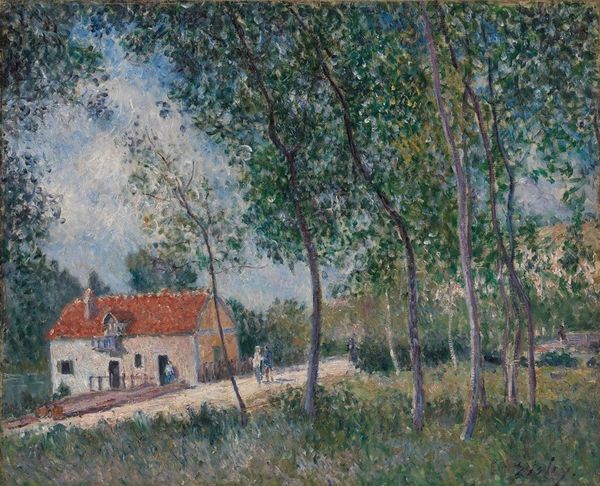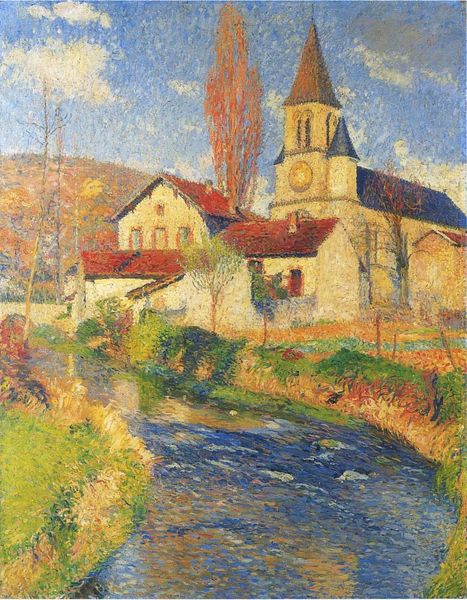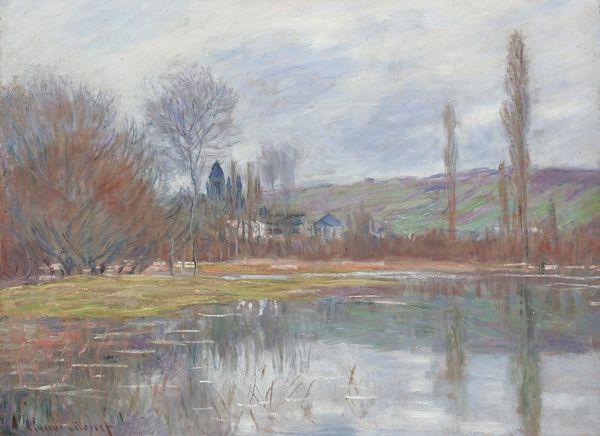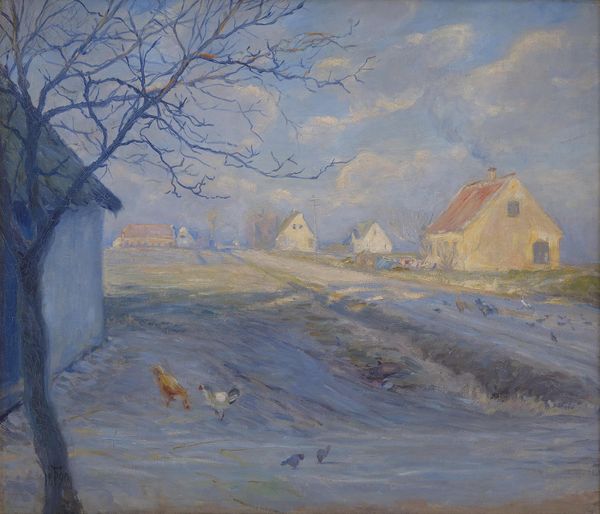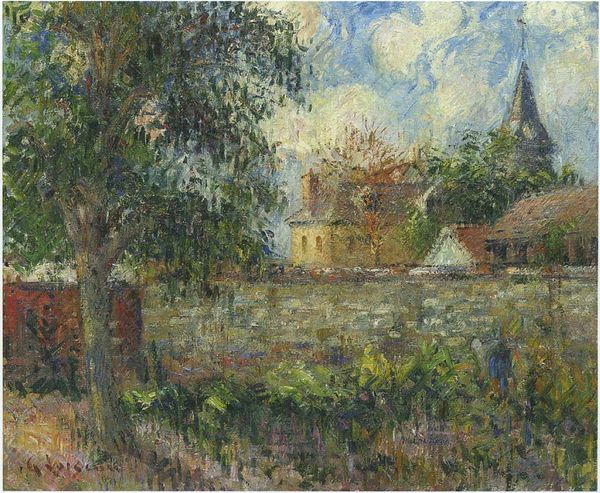
Copyright: Public Domain: Artvee
Curator: Welcome. Before us hangs Pierre-Auguste Renoir’s “L’église à Essoyes,” an oil on canvas likely completed in the 1890s. Editor: It's surprisingly bleak for Renoir, isn’t it? That pervasive umber tones, it makes me think of a cold, late autumn afternoon, a melancholy feeling. Curator: Perhaps, but observe how the composition directs the eye. The branches of the foreground tree cleverly frame the church in the distance, establishing a clear visual relationship between nature and the structure. Editor: Essoyes was Renoir's wife's hometown, where he spent his summers—it can be interpreted as a celebration of place and the connection to one's roots. Curator: Undoubtedly, but look closely at the brushwork. Notice how the rapid, broken strokes capture the fleeting quality of light—a core principle of Impressionism. These daubs create a textured surface, an almost tangible representation of the air itself. The eye dances across the canvas. Editor: Yes, and Renoir, especially late in his career, received criticism for paintings like this, ones that were very sentimental. The painting style appears to take priority over communicating the social and communal meaning embedded in the church being there in that specific town. Curator: Indeed, and from a formalist perspective, the content becomes secondary to how these pictorial elements coalesce. Renoir directs color to model forms but mainly emphasizes surface animation as its subject. Editor: Yet, ignoring context is risky. Consider the role of religion within this community, within Renoir's family. Can’t we see it as a nostalgic idealization, especially from a comfortable, upper-class vantage point? Curator: That reading is possible. What impresses me, ultimately, is how Renoir synthesizes observed reality with subjective sensation. He provides the optical truth, yet transcends literal representation, creating an immersive aesthetic experience. Editor: Agreed. And perhaps, in its subtle melancholic mood, Renoir hints at deeper reflections on time, memory, and mortality tied to the role of a church within that town.
Comments
No comments
Be the first to comment and join the conversation on the ultimate creative platform.
